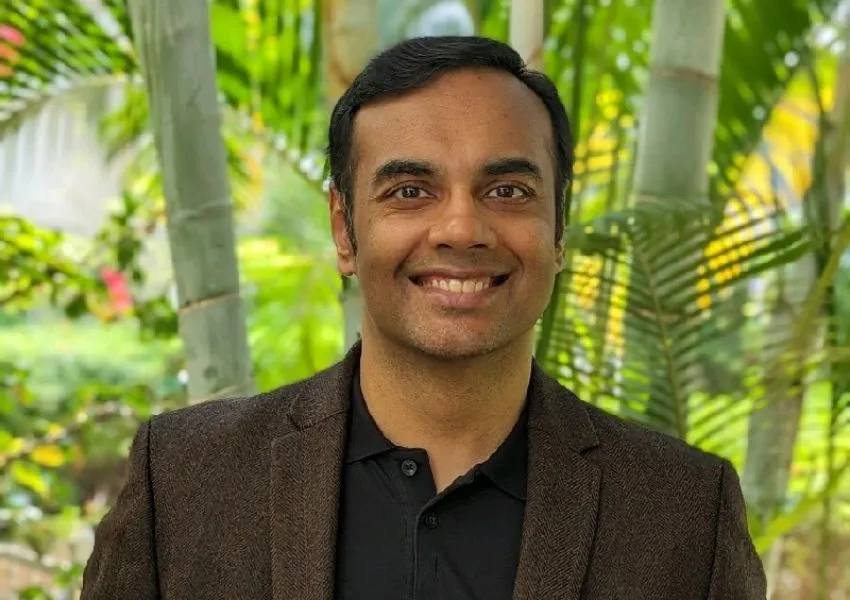WHEN THE NARENDRA MODI GOVERNMENT came to power in 2014, one of its more memorable slogans was ‘minimum government, maximum governance’, a pledge to reduce the size and business footprint of government. In one area in particular, it has little to show on this count: the divestment of PSUs (public sector undertakings). Though it has regularly set ambitious revenue targets, totalling Rs 6.57 lakh crore since 2014-15, it has fallen short year after year, achieving Rs 4.04 lakh crore as of 2020-21. The figures for this past fiscal year were particularly bad, with disinvestment revenues of Rs 31,000 crore against a target of Rs 2.1 lakh crore.
Nevertheless, finance minister Nirmala Sitharaman’s 2021-22 budget reiterates this commitment. Also, given that the outlook for both economic buoyancy and tax revenues remains subdued, the government is hoping to use the proceeds of big-ticket disinvestment to bankroll the next phase of economic recovery. In this effort, the Department of Investment and Public Asset Management (DIPAM) will play a key role. Its job is to make a few hundred PSUs lined up for divestment look attractive to investors. DIPAM has its task cut out, given the government’s reliance on non-tax resources. Making a virtue of that necessity, Ajay Bhushan Pandey, finance secretary and one of the chief architects of the budget, says: “The question was whether to follow an incremental approach or make a quantum leap. This budget is about a quantum leap into the future. The plan is to monetise [public sector] assets; the government should only be a facilitator.”
“India is in a position where it must be less sentimental about PSU sales,” says Tuhin Kanta Pandey, DIPAM secretary, the man in charge of pushing the divestment agenda. “This will require dynamism from the private sector, we want more people to compete.” This no doubt refers to the private sector’s lukewarm response to the Modi government’s disinvestment programmes so far. Noting how crucial PSU sales are in the current context, MP and chairperson of the standing committee on finance, Jayant Sinha, says, “This is a defining moment for disinvestment and privatisation of public assets.”
SALES TARGET FOR THE YEAR
For 2021-22, the Centre has targeted Rs 1.75 lakh crore in revenue from disinvestment, privatisation and asset monetisation. However, in the past two years, its efforts in this direction have moved slowly, for instance, the Centre has already extended the disinvestment deadline for BPCL (Bharat Petroleum Corporation Limited) several times. Similarly, it was only after several deadline extensions that the government received bids for its stake sale in Air India.
The finance minister has said that the disinvestment of these companies and others, including the Shipping Corporation of India, the Container Corporation of India, IDBI Bank, Bharat Earth Movers Limited, Pawan Hans and Neelachal Ispat Nigam, would be completed in 2021-22. In addition to these, the government says it will take up the privatisation of two public sector banks and one general insurance company in 2021-22, with the legislative amendments for these being introduced in the current session of Parliament. The government has also said that it will maintain a presence in a handful of strategic sectors, these include atomic energy, space and defence, transport and telecommunications, power, petroleum, coal and other minerals and banking, insurance and financial services. The NITI Aayog will be tasked with drawing up a list of other PSUs for the next round of divestment efforts.
In this, the Modi government has a fine template it could follow, the divestment measures taken by the BJP government under then prime minister Atal Bihari Vajpayee. That government was known for its aggressive push for privatisation of CPSEs (central public sector enterprises) between 1998 and 1999-2004. For instance, the Vajpayee government had formed a department of disinvestment in 1999, which became a ministry in 2001, with Arun Shourie as the first disinvestment minister. Under Shourie’s watch, a host of CPSEs were privatised, including telecom player VSNL, Centaur Hotels, Hindustan Zinc and Maruti Udyog. These efforts saw the Vajpayee government raising Rs 36,960 crore from 1998 to 2004. However, these were not without controversy, even after nearly two decades, Shourie is still haunted by a case filed against him alleging irregularities in the sale of a government-owned hotel in Udaipur.

THE NAYSAYERS
Some argue that the disinvestment process should not lead to the government selling profitable enterprises, only those that need a change in management to become profitable. “Public sector banks, whatever their weaknesses, are the pivot around which a number of programmes are evolved and implemented,” P. Chidambaram, Congress leader and former finance minister, said in a press meet. “The answer is not wholesale privatisation.”
Others say the Centre’s announcements should be taken with a pinch of salt. “The government has not been very aggressive on the divestment front so far,” says D.K. Joshi, chief economist with Crisil. “It may be able to carry out its plans this year, since it has already made preparations for some of these sales earlier.” What will be crucial is how the government implements its divestment programme in the wake of likely protests from the Opposition and trade unions. “It is a big step provided it gets done. Implementation is the elephant in the room,” emphasises Joshi.
The government will also have to contend with opposition from within the ruling alliance and its affiliates. For example, the Bharatiya Mazdoor Sangh (BMS), a group affiliated to the RSS, was quick to criticise the disinvestment programme, saying that “the mixing of the beautiful concept of Atmanirbhar Bharat with FDI (foreign direct investment) and disinvestment in the Union budget is disappointing for employees”. Beginning February 12, the BMS will be holding a three-day meeting of its national executive council in Chennai, and will decide then on how to oppose these budget proposals.
Similarly, the RSS and the Swadeshi Jagran Manch (SJM), the RSS’s umbrella organisation of affiliates in the economic sphere, have a long history of vehemently opposing proposals for disinvestment and enhanced FDI. In fact, they still remain critical of former finance minister Yashwant Sinha and Shourie. One specific issue is the raising of FDI limits. “We are not against privatisation or FDI, but there has to be a tangible reason [for these],” says Ashwani Mahajan, national co-convenor of the SJM. He adds that there is a need for a national debate on how the government intends to carry out its disinvestment programme and a clear explanation of how FDI will benefit consumers. “We have already told [the Centre] there is no need for strategic disinvestment in PSUs like BPCL, Shipping Corporation or Air India,” he says, saying that BPCL is a profit-making enterprise. He adds that such assets should be divested in the stock market and should be run by professional management, and that public sector banks should be dealt with in the same way. “In the past year, two private sector banks have collapsed,” he points out, arguing against the idea that privatisation always brings good management.
Many RSS leaders are also not in favour of large-scale privatisation. “We understand that the government has no business being in business,” says a top leader, asking to remain anonymous. “Excessive bureaucracy also leads to corporations not performing up to their potential and often leads to corruption. [However], disinvestment and asset monetisation require not only caution, but also across-the-board consultations.” Satish Marathe, an RSS ideologue and part of the RBI’s board, argues that there is need to reform the management and operational structure of public sector banks, not their ownership.
Although BJP chief J.P. Nadda has hailed the Union budget as one for an ‘Aatmanirbhar Bharat’, several top party leaders, speaking on condition of anonymity, say that while privatisation, asset monetisation and private capital may be good economics, they are very hard to sell politically. “Most experts would argue that the recent farm sector reforms are good plans that are well intended and would benefit farmers,” points out a leader. “Yet we are finding it difficult to sell this idea to those who would benefit from it.” There is a general sense among the BJP cadre that there is a huge gap in communicating the benefits of these proposals to those who matter. “Privatisation and asset monetisation have the potential to create a negative narrative,” says the leader, “that everything is for sale, that the country is for sale.”


A FOCUSED APPROACH
Analysts describe the new model of growth, monetising government assets worth lakhs of crores of rupees, reducing government presence in business and building assets, as Keynesian, focusing on boosting demand via infrastructure rather than through doles. Parallels are being drawn to the UK of the 1980s under Margaret Thatcher, which instituted a massive privatisation drive to spur economic growth.
Sources say that every detail of the Centre’s PSE (public sector enterprise) policy has been vetted by the PMO (prime minister’s office), and that it will be closely monitoring the implementation. The process of putting up stake sales in PSUs includes a multi-tier approval process, involving several committees, including one headed by the cabinet secretary and another comprising a group of ministers with cabinet powers. Tuhin Pandey says that decisions will be taken on a project-to-project basis, because each CPSE divestment will pose unique challenges. And as the Centre looks to attract investors, it will have to focus on the details that it clearly missed during the Air India disinvestment process, such as who takes over sovereign guarantees, or who pays for the voluntary retirement schemes and so on. A former minister who has worked closely on divestment suggests that the government ought to consider listing PSUs chosen for disinvestment on the stock markets to improve price discovery. However, Pandey points out that there aren’t too many PSUs left that would be attractive to investors and are large enough on the bourses.
There are also several soft skills that government functionaries will need to develop to deal with bankers and investors. “The reward is in selling the company at the best price, but the government invites just about anyone to apply for request for proposal,” says an investment advisor who has worked with the government. “Investment bankers are asked to make presentations that would take 45 minutes in 15 minutes, and the honorarium that’s paid is just one rupee!” In another instance, a fund manager recounts an experience in 2013 when one of India’s largest banks conducted a road show in London. At a meeting with the managers of a leading UK-based fund, bank officials spent nearly 45 minutes talking about the history of the bank, leaving no time for discussions on critical aspects like the bank’s non-performing assets (NPAs or bad loans).
There is also a need for a radical shift in mindset and the empowerment of officers to allow speedy resolution of issues. Pandey also talks about litigation hurting disinvestment agendas, for instance, the BPCL privatisation move saw several court cases piling up on issues like wage settlement and an employee stock purchase scheme ahead of the planned disinvestment. Other countries roll out the red carpet for investors; in India, investors are left to fend for themselves. This includes superficially trivial issues like investors having to wait extended periods outside government ministries for passes to go inside, which tends to dampen their interest in making a deal.

Overloaded infra: A heavy crowd at Noli Railway Station in Ghaziabad, National Capital Region

TWO AIMS, ONE PLAN
Another major announcement in the budget relates to the Centre’s ‘national monetisation pipeline’ to monetise public infrastructure assets in railways, highways and infrastructure. As Vinayak Chatterjee, chairman of Feedback Infra, says, “The budget is like a jugalbandi, with two hands playing the tabla. One hand is focused on roads, infrastructure and public works, while the other is focused on asset monetisation.” Two major sectors in which this jugalbandi is visible is railways and energy.
On this count, finance minister Sitharaman talked about asset monetisation of the Railways’ in-development DFCs (Dedicated Freight Corridors) as part of the reform of the Indian Railways. Apart from allowing private players to own and operate freight trains, the Railways has also asked its subsidiary, RailTel, to look for ways to monetise the 2,800-km-long optical fibre running alongside the DFCs.
In her budget speech, finance minister Sitharaman talked about the Indian Railways’ ‘mission 2030’, which would involve infrastructure upgrades and improved facilities for consumers. This would require investments of over Rs 50 lakh crore over the next decade. This year, Sitharaman has allocated Rs 1.1 lakh crore to the Railways, 57 per cent more than last year’s allocation of Rs 70,000 crore. Apart from completing existing projects, this money will be spent on track electrification and expanding the railway network in northeastern states and in J&K. The budget also announced the commencement of work on new DFCs connecting West Bengal’s Kharagpur with Andhra Pradesh’s Vijayawada via a 1,115-km-long east-coast corridor, and a 935 km route connecting the port at Vijayawada with Nagpur (Maharashtra) and Itarsi (Madhya Pradesh). If private players show enough interest in existing DFCs, the same template can be replicated for these projects.
Last year, the Union cabinet also rolled out a plan to add 151 private trains on 109 routes over the next seven years. If all goes well, the first batch of 12 private trains will begin operations by March 2023. These trains will directly compete with the 2,800 express and mail trains run by the Indian Railways. However, to monetise assets and to allow private trains to ferry freight as well as passengers, the Railways requires the appointment of a regulator. The lack of such an authority has already left some early private entrants to the field with a bitter taste and remains a major hurdle for new investors. For example, in 2006, when the then railways minister Lalu Prasad Yadav opened up freight transport to the private sector, 16 private players entered with a cumulative investment of around Rs 6,000 crore. Data from the association of container train operators shows that as of end-2020, they had suffered losses of about Rs 700 crore. Operators cite the doubling of haulage charges, which make up 60-70 per cent of their operating costs, in the past 14 years as the main reason for losses. What makes matters worse is that private players have no authority to challenge such charge escalations.
Nonetheless, the appointment of a regulator is politically sensitive, and it will have to deal with several legacy issues. For instance, the passenger transport business is a loss-making vertical for the Indian Railways—on average, it meets about 57 per cent of its operational costs through the sale of passenger tickets, with the rest being cross-subsidised through earnings from freight. A regulator will have to cut down on cross subsidies, which would mean either an increase in passenger fares or the exchequer bearing the burden of the subsidies. That said, there are potential knock-on benefits to the entry of private players, like an increased demand for rolling stock (locomotives, coaches, etc) as private firms develop their own railway stables. A more corporate-friendly structure will not only help to bring in private players and capital, but is also expected to help the railways upgrade its technology.
In the last week of January, a week before the finance minister announced the Centre’s intent to monetise energy infrastructure such as transmission lines and oil and gas pipelines, state-promoted transmission company Power Grid filed draft IPO (initial public offering) papers for its first infrastructure trust, the first time a public sector enterprise has used such a vehicle to monetise assets. It is expected that the trust will raise up to Rs 4,995 crore through the IPO, while its sponsor Power Grid also plans to sell units worth up to Rs 3,000 crore through it, taking the total expected revenue to almost Rs 8,000 crore. The government expects to use the money raised out of asset monetisation to fund Power Grid’s existing network expansion plans.
The good news for the private players in transmission as well as in renewable energy relates to development finance institutions (DFIs). If successfully implemented, DFIs will cut down the dependency of these players on banks and the corporate bond market for funding. Meanwhile, the successful implementation of the soon-to-be-launched Atal Distribution System Improvement Yojana, aimed at assisting discoms (distribution companies) in infrastructure creation would also make the life of private players, if they decide to enter the sector, much easier.
To make privatisation a success, India will have to rethink how it sells. It will have to deck up its halls and welcome the investor. It will need to empower and incentivise those who will make it happen, the management and the bankers. Above all, it needs to take all stakeholders along and not allow things to get into a stalemate as we have seen in the case of the new farm laws.














